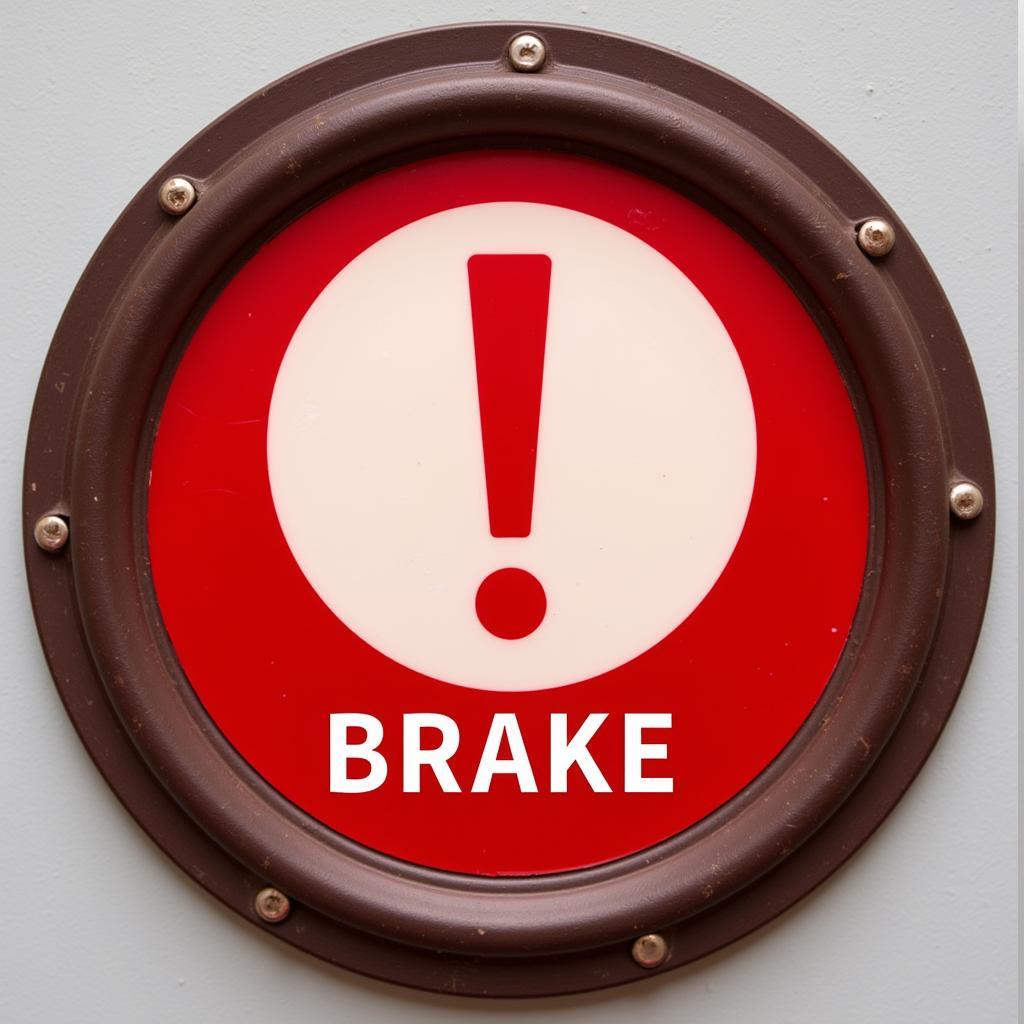A brake light warning sensor plays a crucial role in road safety, alerting other drivers when you’re slowing down or stopping. When this sensor malfunctions, you’ll likely see a warning light on your dashboard, signaling a potential issue with your brake lights. Ignoring this warning can be dangerous, increasing the risk of accidents.
This comprehensive guide delves into the intricacies of brake light warning sensors, equipping you with the knowledge to diagnose and address common problems.
Understanding the Brake Light Warning Sensor
The brake light warning sensor, often integrated into the brake light switch, acts as a critical link between your brake pedal and the brake lights. When you press the brake pedal, the sensor activates, completing a circuit that illuminates the brake lights.
Common Causes of Brake Light Warning Sensor Issues
Several factors can lead to brake light warning sensor problems:
-
Faulty Brake Light Switch: A worn-out or malfunctioning brake light switch is the most common culprit. Over time, the switch’s internal contacts can wear down, preventing the circuit from closing and activating the brake lights.
-
Blown Fuse: A blown fuse in the brake light circuit can interrupt power to the sensor, preventing the lights from illuminating.
-
Damaged Wiring: Frayed, corroded, or broken wires within the brake light circuit can disrupt the flow of electricity, leading to sensor malfunctions.
-
Burned-Out Bulbs: While not directly related to the sensor, burned-out brake light bulbs can trigger the warning light on your dashboard.
Diagnosing Brake Light Warning Sensor Problems
If your brake light warning light illuminates, it’s crucial to diagnose the issue promptly:
-
Check the Brake Lights: Have someone press the brake pedal while you visually inspect all brake lights, including the third brake light, to ensure they’re working correctly.
-
Inspect the Brake Light Switch: Locate the brake light switch, typically mounted near the brake pedal. Examine it for visible damage, loose connections, or signs of wear.
-
Test the Fuse: Refer to your vehicle’s owner’s manual to locate the brake light fuse. Using a fuse tester or visually inspecting the fuse, determine if it’s blown.
-
Inspect the Wiring: Carefully examine the wiring harness leading to the brake light switch and bulbs for any signs of damage, such as fraying, cuts, or corrosion.
Solutions for Brake Light Warning Sensor Issues
Depending on the diagnosed issue, several solutions can address brake light warning sensor problems:
-
Replace the Brake Light Switch: If the switch is faulty, replacing it is a relatively straightforward repair.
-
Replace the Fuse: If the fuse is blown, replace it with a new one of the same amperage rating.
-
Repair or Replace Damaged Wiring: If you identify damaged wiring, repair or replace the affected sections to restore proper electrical flow.
-
Replace Burned-Out Bulbs: Replace any burned-out brake light bulbs with new ones of the correct type and wattage.
When to Seek Professional Help
While some brake light warning sensor issues are DIY-friendly, it’s best to seek professional assistance if:
- You’re uncomfortable working with electrical components.
- You’ve diagnosed the problem but lack the tools or expertise for the repair.
- The issue persists even after attempting basic troubleshooting.
“Addressing brake light problems swiftly is paramount for driver and passenger safety,” emphasizes John Smith, a seasoned automotive electrician. “A functioning brake light system is non-negotiable, and seeking professional help ensures a reliable and safe repair.”
Preventative Maintenance Tips
Regular maintenance can help prevent brake light warning sensor problems:
-
Periodically inspect your brake lights: Check your brake lights regularly to ensure they’re functioning correctly.
-
Address any warning lights promptly: Ignoring warning lights can exacerbate problems and lead to more extensive repairs.
-
Have your vehicle serviced regularly: Regular vehicle servicing, including brake inspections, can help identify and address potential issues before they escalate.
Conclusion
A functioning brake light warning sensor is essential for safe driving. By understanding the common causes of sensor issues and following the troubleshooting steps outlined above, you can address many problems yourself. However, don’t hesitate to seek professional assistance when needed to ensure your vehicle’s brake system operates safely and reliably. Remember, your safety and the safety of others on the road depend on it.

